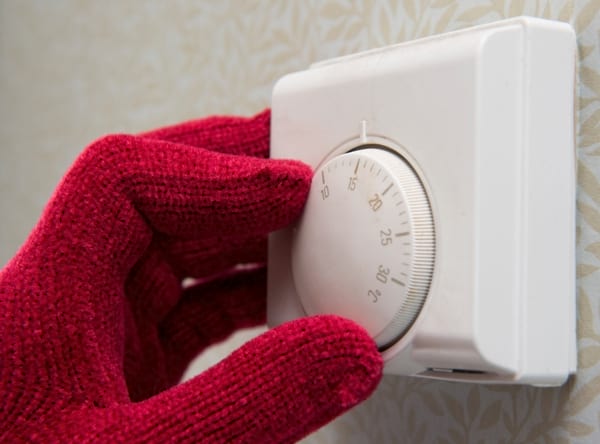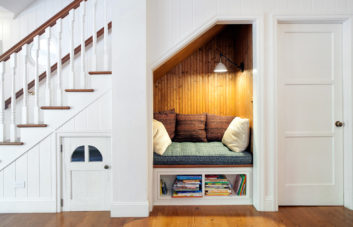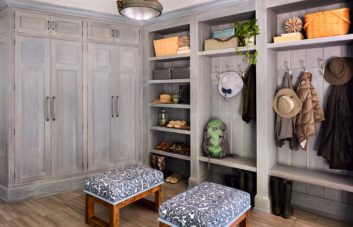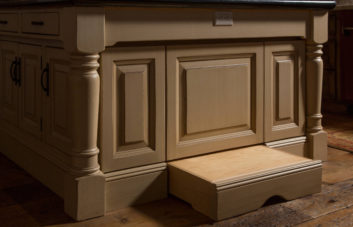Brrr, it’s cold out there! It’s time to fire up that heat to keep the chill out of your home. But with so many different heating systems available to heat your home, how do you know which one’s the best for you?
Here’s how: you read the Quality Bath blog! We’ve created a clear list of the three most popular types of heating systems to help you understand your options. Whether you’re building a new home or upgrading your heat, this guide will help you through it.
Forced air
A forced air system is the most commonly found heating system. This is the standard vented system that you probably associate with “turn on the heat” – vents, ducts, and warmer pockets of air near the vents.

Many of the disadvantages of forced air systems can be remedied fairly easily with well-placed vents (if installing a new system or moving ductwork) and choosing a zoned system (where each room or area has its own thermostat) rather than a singular central system. (The only downside of zoned systems when compared to single-zone systems is increased installation – and possibly maintenance – costs.)

Advantages of forced air heat
- Inexpensive to install
- Ductwork can be used for central air all-in-one system
- Heats quickly
- Built-in filtration; improved air quality
- Fairly efficient, especially newer models
Disadvantages of forced air heat
- Uneven heating (arrange furnishings and vents to optimize air flow and distribution; install a zoned system to avoid cold rooms and hot rooms)
- Blows dust
- Dry heat – can be irritating to skin and lungs
- Noisier than other options
- Ducts and filters may be costly to repair and maintain
- Ductwork takes up space
- Furniture placement must be arranged around vents
- Depending on heat source (natural gas, oil), may be costly to run
Baseboard
Baseboard heating consists of individual units installed along – you guessed it! – the baseboards of the room(s) you wish to heat. They’re essentially the newer version of the old wall-mounted steam radiators. Baseboard heaters can be electric or hydronic (powered by hot water).
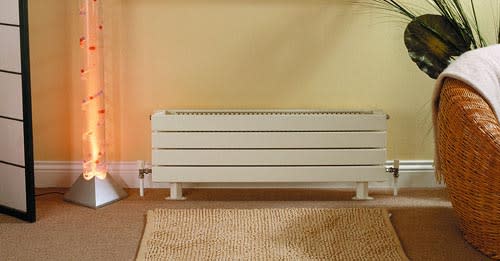
Pros of baseboard heat
- Easy and relatively inexpensive to install (no ductwork)
- Energy-efficient; turn it off when you’re out of the room!
- Quieter than forced air
- Even heating (consistent temperature)
Cons of baseboard heat
- Limits furniture arrangement (furnishings must be at least a few inches away from the unit)
- Curtains and other flammable materials must be kept away (fire risk)
- Units are vulnerable to damage from everyday foot traffic
- Multiple units may be necessary to heat a large space
- Takes longer to warm up than forced air
- Unattractive units (though more discreet models, covers and clever camouflages are available)
Radiant
Radiant systems provides heat via panels and pipes installed under the floors, in the walls, or even in the ceilings. These systems may run on electricity or hot water (hydronic); electric systems are best for small spaces, such as bathrooms, rather than whole homes. Radiant heat is not recommended for homes with poor energy efficiency (as the heat will seep out) or, conversely, excellent energy efficiency (as the costly system will not “pay for itself” quickly).

Pros of radiant heat
- No visible heaters
- Even heat distribution
- Warm floors (great for those who like to go barefoot!)
- Accurate temperature; easy to control by zone
Cons of radiant heat
- Pricey to install (best done in new construction or total gut renovations)
- Difficult to repair
- May limit flooring choices; in-wall systems limit decor options
- Takes time to reach desired temperature; best if run continuously
Heat sources
Your heating system works on one of several heat sources:
- Electricity (drives up the electric bill)
- Oil, natural gas, propane (often costlier; must be refilled periodically)
- Wood or coal (for stove-powered systems)
- Hydronic (hot water)
- Solar (panels or other systems; eco-friendly but often unsightly or unsustainable)
- Geothermal heat pump (the latest – pricey! – technology; put simply, heat is taken from the earth to heat your home)
What kind of heating system do you have? Love it or hate it?

